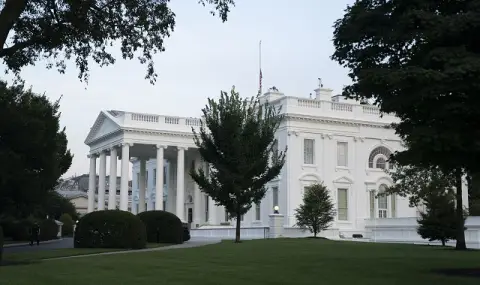In the United States, it's not enough to win the most -many votes in the country to become president. It is enough to recall the experience of Hillary Clinton, who beat Donald Trump by nearly 2.9 million votes in 2016 and still lost the election.
The secret is to collect the most votes in the right places.
Yahoo News presents who will be the "fighting" flights of Trump and Vice President Kamala Harris.
With few exceptions, the candidate who receives the most votes in a particular state on Election Day receives all of that state's electoral votes in proportion to its population. Whoever finishes first in enough states to secure at least 270 electoral votes, representing a majority, wins the seat in the Oval Office.
Because of this winner-takes-all principle, candidates tend not to campaign in states that consistently vote Democratic (blue states) or Republican (red states). Instead, they focus on the small number of swing states that can swing the outcome one way or the other.
How do we know which states will be the battlegrounds for Trump and Harris in November, analysts ask. One guide is history - in some states they tend to vote hard either Democratic or Republican. In other states, voting is on the scales.
Ohio is a good example. From 1900 to 2012, this state has always elected the winning candidate for president 93% of the time (in all elections from 1964 to 2016).
In 2020, however, as white working-class voters begin to gravitate toward the Republicans, Ohio is no exception. In 2020, Trump won there by a comfortable 8 percent lead, even though Joe Biden won the election.
Missouri follows the same trajectory; in Florida, too, voters lean to the right. At the same time, in New Mexico, in Colorado and in Virginia, they demonstrate more left preferences.
Journalist Nate Silver offers his election forecast, developing the Silver Bulletin model.
According to him, Harris and Trump could have a difference of 3 points in seven states. He also recalls what the voting was like in these states in 2020:
1. Arizona (Trump +0.6% in 2024; Biden +0.3% in 2020)
2. Georgia (Trump +0.9% in 2024; Biden +0.2% in 2020)
3. Pennsylvania (Harris +1.0% in 2024; Biden +1.2% in 2020)
4. Nevada (Harris +1.1% in 2024; Biden +2.4% in 2020) 5. Wisconsin (Harris +1.9% in 2024; Biden +0.6% in 2020) 6. North Carolina (Trump +2.0% in 2024; Trump +1.4% in 2020) 7. Michigan (Harris +2.6% in 2024; Biden +2.8% in 2020)National polls show Harris leading Trump by an average of about 2 to 3 percentage points.
In 2020, Biden beat Trump 306 to 232.
If Nate Silver's prediction comes true, both Arizona and Georgia vote for Trump; and in North Carolina the preferences remain, and Wisconsin, Michigan, Nevada and Pennsylvania elect Kamala Harris, then she will win by 279 electoral votes.
Of course, these are just predictions - in general, demographics and voter distribution will largely determine the final outcome in each state.
College-educated white residents of Pennsylvania, for example, do not vote much differently than college-educated white residents of Arizona. The question is how many of them live and vote in each state.
On the other hand, there are issues that can swing elections, such as abortion and immigration - they can motivate otherwise passive voters to go to the polls on election day to vote "Yes". or "Against" the specific policy. The issue of abortion could swing the outcome in Arizona and Nevada, and the issue of immigration in Arizona.
A new key issue could be opposition to the war in Gaza, which is relevant to Arab-Americans, who have the largest community in Michigan, but as seen in Nate Silver's forecast, he has already warned that to this state attention should be more acute.
